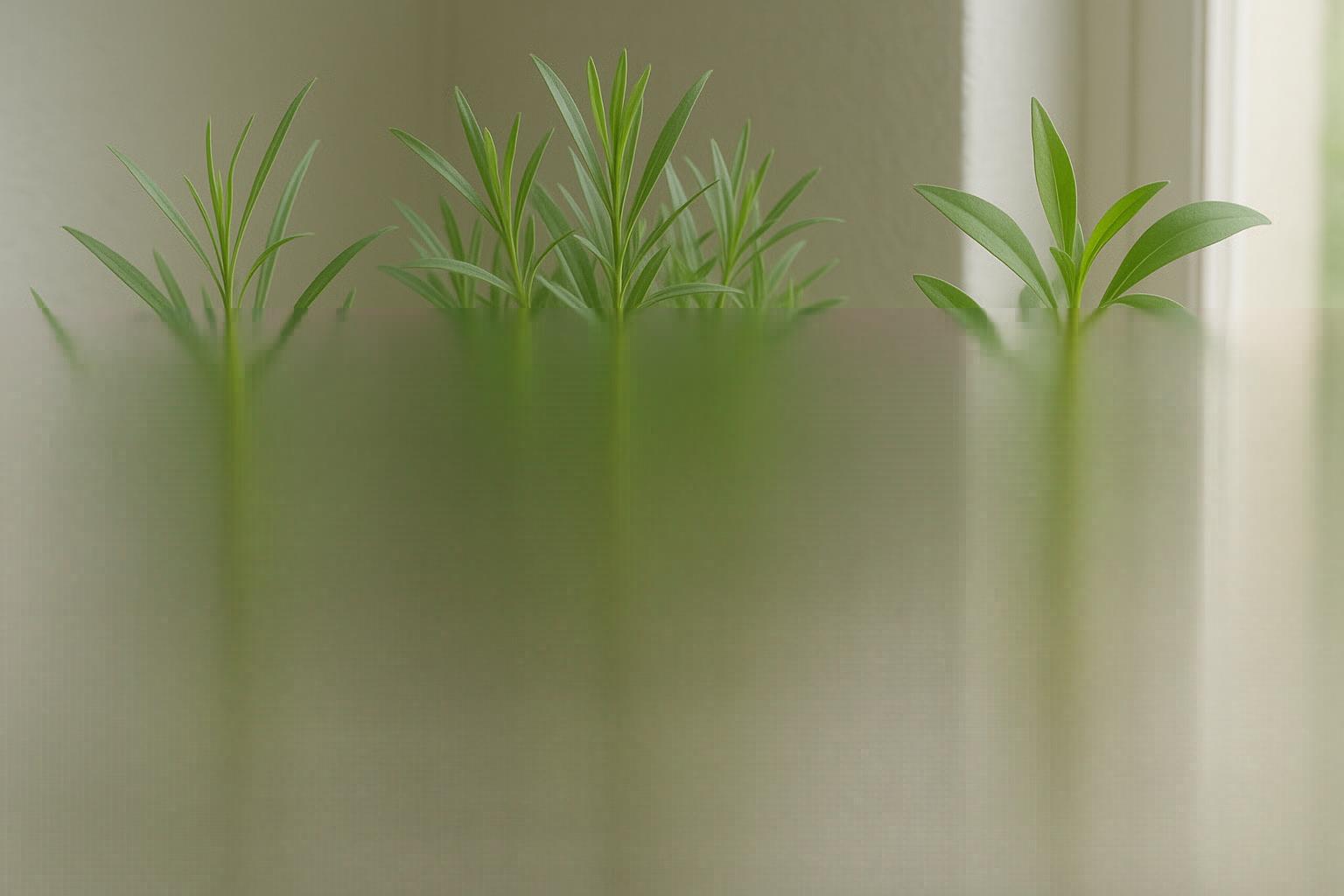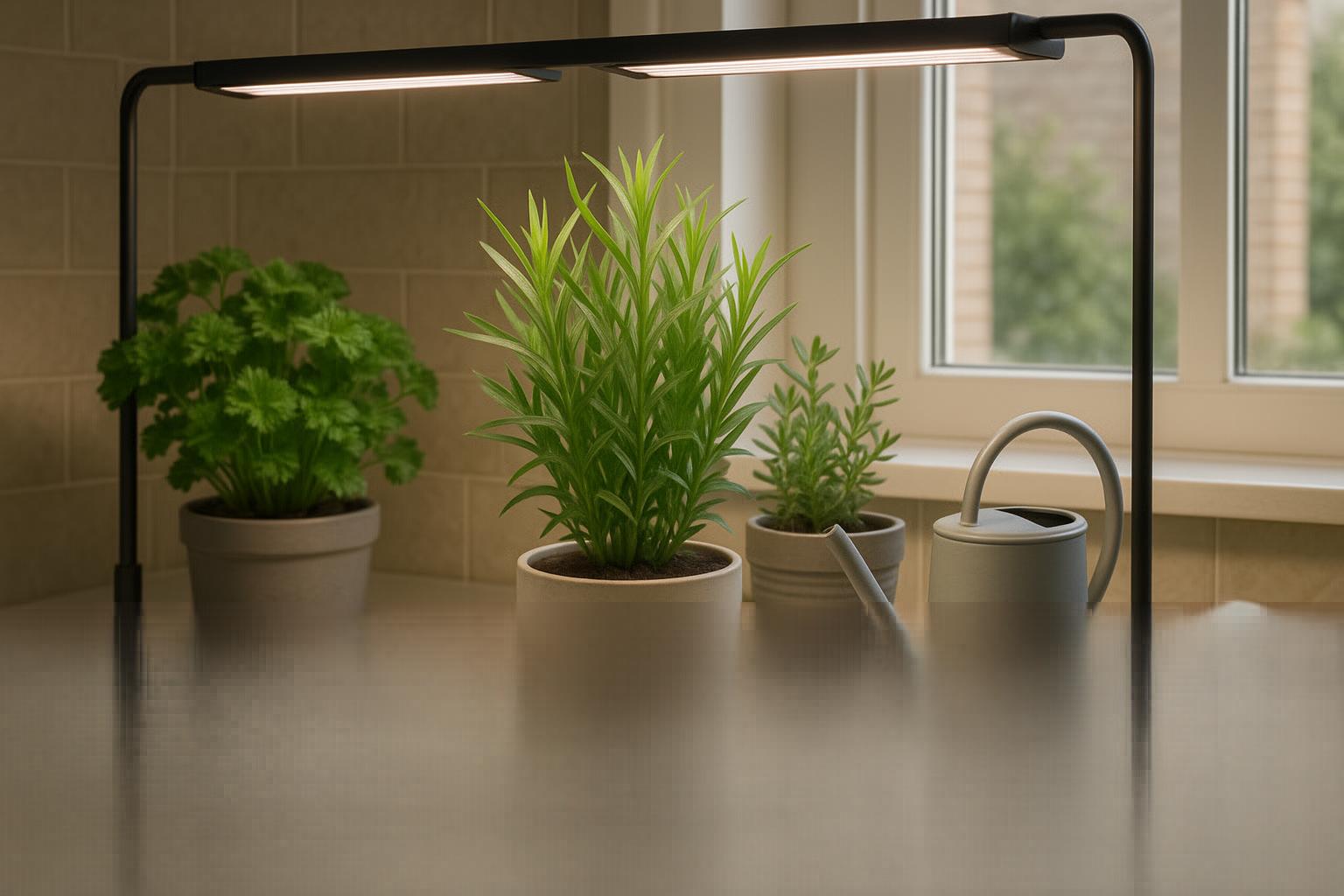Introduction to Growing Tarragon Indoors
Growing tarragon indoors is a game changer for any home chef or lover of fresh herbs. Known for its unique, anise-like flavor, tarragon transforms simple dishes—think chicken, fish, or salad dressings—from ordinary to gourmet with just a few sprigs. If you’ve ever bought tarragon from the grocery store, you know its delicate leaves don’t last very long.
That’s where growing tarragon indoors, especially with the help of grow lights, comes in. With a dedicated light source, you no longer have to wait for the right season or worry about your windowsill getting enough sunlight. This approach means tarragon thrives in any climate, all year round. Imagine snipping fragrant, fresh leaves any day, whether it’s a snowy January or a rainy spring.
Grow lights also offer controlled conditions—consistent warmth and illumination—which help prevent common outdoor issues like pests and unexpected temperature swings. Plus, indoor gardening keeps your herbs within arm’s reach. For busy cooks, that’s invaluable: washing and chopping fresh tarragon can be as simple as walking to your kitchen counter.
If you’re craving brighter, more flavorful meals—and a hobby that’s as rewarding as it is tasty—growing tarragon indoors with grow lights may be the best next step for your kitchen garden.
Choosing the Right Tarragon Variety

When it comes to growing tarragon in your herb garden, choosing the right variety makes all the difference. Among the three main types—French, Russian, and Mexican tarragon—French tarragon (Artemisia dracunculus ‘Sativa’) is the clear winner for culinary purposes. Its delicate, slightly sweet flavor carries subtle hints of anise, perfect for classic dishes like béarnaise sauce or a fresh herb vinaigrette.
Russian tarragon, while easier to grow from seed, tends to be more bitter and lacks the refined taste that French tarragon offers. Mexican tarragon, actually a different species (Tagetes lucida), has an aroma somewhat similar to French but is often used as a substitute in hotter climates.
Importantly, if you want authentic French tarragon, you’ll need to source it from cuttings or plant divisions—never seeds—since it rarely produces viable seeds, and those that do sprout won’t be true to type. To ensure a healthy plant, visit reputable local garden centers or look for specialty herb suppliers online with solid reviews.
Look for young plants with lush green leaves and no signs of wilting or insect damage. If possible, ask staff about the plant’s origin or request certified French tarragon specifically, since mislabeling can happen. Growing from a robust starter plant sets you up for flavorful harvests all summer long, giving every dish that unmistakable French touch.
Setting Up Your Indoor Tarragon Garden
Starting your indoor tarragon garden is simple with the right container and location. Choose a pot that’s at least 6-8 inches deep and about 8-12 inches wide to give the herb’s roots enough room to develop and spread. Make sure your container has several drainage holes at the bottom so excess water can escape—tarragon doesn’t like soggy roots, and proper drainage helps prevent root rot. For soil, use a high-quality potting mix designed for indoor herbs or vegetables, one that’s light and well-draining. Avoid garden soil, which can be too dense and may harbor pests.
Lighting
Lighting is critical for healthy tarragon growth. A south- or west-facing windowsill that gets at least six hours of bright, indirect sunlight daily is perfect. If that’s not available, supplement natural light with an energy-efficient LED grow light or a fluorescent light. Both work well, but LED grow lights last longer and use less energy. Position the light 6-12 inches above the plants and keep it on for 12-16 hours a day, especially during darker winter months. Using a timer can automate the schedule and ensure your plant gets consistent light.
Temperature and Humidity
Tarragon thrives in temperatures between 60°F and 75°F, so keep your garden away from drafts or vents. Indoor humidity should stay moderate—around 40-50% is ideal. If your home is dry, especially in winter, use a shallow tray of pebbles and water beneath your pots or place a small humidifier nearby to boost moisture.
Placement
Place your tarragon on a bright kitchen windowsill, a living room shelf near light, or a dedicated indoor plant stand. This way, your herb is within easy reach for cooking and gets all the elements it needs to thrive indoors.
Planting and Caring for Tarragon Under Grow Lights

To plant tarragon from cuttings or divisions under grow lights, start by choosing a well-draining potting mix and a container with good drainage holes—tarragon doesn’t tolerate soggy roots. Insert your cuttings 2-3 inches deep or plant divisions at the same soil depth they grew previously, then lightly firm the soil around the base.
Place the container about 6-12 inches below your grow light, setting the timer for 12-16 hours of light daily. Water sparingly: tarragon prefers slightly dry conditions, so allow the top inch of soil to dry before watering again. Stick your finger into the soil to check moisture, and be careful not to overwater; yellowing leaves often signal too much moisture.
Fertilize your tarragon every four to six weeks during active growth, using a balanced liquid fertilizer diluted to half strength. Apply it directly to the soil after watering to prevent root burn.
For lush, bushy plants, prune regularly—pinch back the top inch or two of stems every couple of weeks, starting when plants are four to six inches tall. This frequent pinching helps the plant branch out rather than becoming long and leggy. Always use clean, sharp scissors to avoid disease, and clip just above a leaf node.
Remove any flower buds that appear, as flowering can reduce leaf flavor and growth. With these simple care steps and regular maintenance under grow lights, your tarragon will thrive indoors, yielding fresh, fragrant leaves for your kitchen year-round.
Common Problems and Simple Solutions
Many indoor gardeners face issues like pests and diseases. Spider mites and aphids can drain your plants’ vitality, while fungal problems such as powdery mildew often appear in humid settings.
Here are some easy, natural fixes:
- For pests, spray plants with a mild solution of water mixed with a few drops of dish soap or use neem oil, which is both safe and effective.
- To combat fungal diseases, remove affected leaves and improve air circulation by spacing plants apart and using a small fan to keep the air moving.
- If your plants are growing tall and spindly (legginess), they likely need more light—move them closer to a window or add a grow light.
Prevention is key:
- Regularly check the undersides of leaves for bugs and wipe off dust to discourage pests.
- Make it a habit to inspect your plants weekly and rotate them so every side receives even light.
- Keep the soil well-drained, avoid overwatering, and trim dead growth to maintain a healthy indoor jungle.
Harvesting and Storing Homegrown Tarragon
For the freshest, most flavorful tarragon, aim to harvest the stems just before the plant starts to flower—usually in late spring or early summer—when the leaves are full and vibrant. Use sharp, clean scissors to snip stems in the morning after the dew has dried but before the heat of the day. Always take just a third of the plant at a time to keep it healthy.
Fresh tarragon shines in salad dressings, over roasted vegetables, or folded into scrambled eggs—its subtle anise flavor pairs especially well with chicken and fish.
To store your bounty long-term, try drying: bundle a handful of sprigs with twine and hang them upside down in a cool, dark spot with good airflow. Once dried, crumble the leaves into a sealed glass jar.
Alternatively, freezing is a fantastic option for preserving that garden-fresh taste. Simply chop the leaves and tuck them into ice cube trays, cover with water or olive oil, and freeze. Pop out a cube or two whenever you want to boost soups, sauces, or marinades.
With a little planning, your homegrown tarragon can add vibrant flavor to dishes all year. Try it swirled into a creamy sauce for baked fish in winter or sprinkled over ripe tomatoes in summer for an instant taste of the garden.
